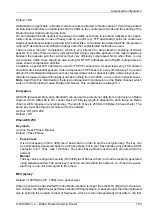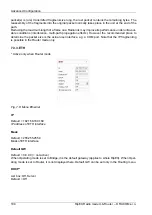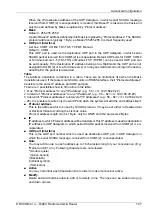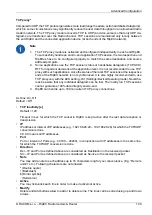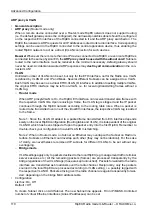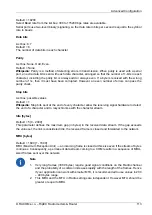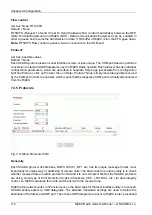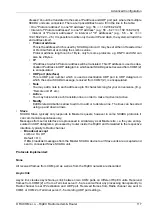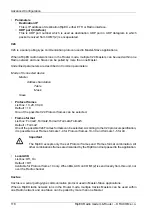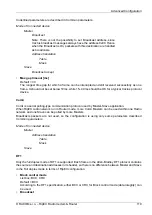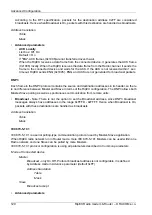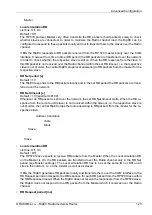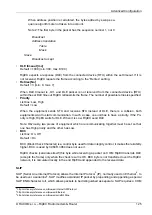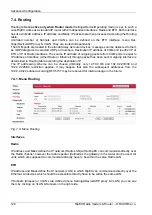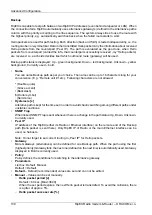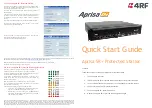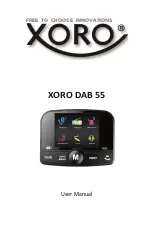
there and they are typically forwarded as unicasts to Radio channel to their destination. When the
gateway defined in the Routing table belongs to the Ethernet LAN, UDP datagrams are rather forwarded
to the Ethernet interface. After reaching the gateway (typically a RipEX router again), the datagram is
forwarded according to the Routing table.
Note
Even if UDP datagrams, they can be acknowledged on the Radio channel (ACK parameter
of Router mode), however they are not acknowledged on Ethernet.
When the UDP datagram reaches its final IP destination, it should be in a RipEX router again (either
its ETH or Radio interface). It is processed further according its UDP port. It can be delivered to COM1(2)
port daemon, where the datagram is decapsulated and the data received on the serial interface of the
source unit are forwarded to COM1(2). The UDP port can also be that of a Terminal server or any
other special protocol daemon on Ethernet like Modbus TCP etc. The datagram is then processed ac-
cordingly to the respective settings.
RipEX uses a unique, sophisticated protocol on Radio channel. This protocol ensures high probability
of data delivery. It also guarantees data integrity even under heavy interference or weak signal conditions
due to the 32 bit CRC used, minimises the probability of collision and retransmits frame when a collision
happens, etc., etc. These features allow for the most efficient SCADA application arrangements to be
used, e.g. multi-master polling and/or spontaneous communication from remote units and/or parallel
communication between remote units etc.
Note
These Radio protocol features are available only in the Router mode. The Bridge mode
is suitable for simple Master-Slave arrangement with a polling-type application protocol.
1.
2.
All timeouts in parameters described below are calculated from time, when packet is
sent into COM driver, i.e. it includes the transfer time of the packet. Take it into account
especially when there is a low Baud rate set in COM setings.
Common parameters
The parameters described in this section are typical for most protocols.
There is only a link to them in description of the respective Protocol.
Mode of Connected device
List box: Master, Slave
Default = Master
Typical SCADA application follows Master-Slave scheme, where the structure of the message is different
for Master and Slave SCADA units. Because of that it is necessary to set which type of SCADA unit is
connected to the RipEX.
Important
For SCADA Master set Master, for SCADA Slave set Slave.
•
Master
SCADA Master always sends addressed messages to Slaves. The way of addressing is different
from SCADA protocol to SCADA protocol, so this is one of the main reasons why an individual
Protocol utility in RipEX for each SCADA protocol has to be used.
○
Broadcast
115
© RACOM s.r.o. – RipEX Radio modem & Router
Advanced Configuration
Содержание RipEX 1.6.0
Страница 2: ......



